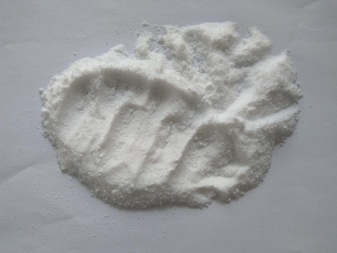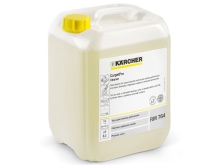The subtleties of choosing an antifoam for a vacuum cleaner

Nowadays, the so-called washing vacuum cleaners are becoming more widespread - devices designed for wet cleaning of premises. Not everyone knows that they require special attention in terms of the use of detergents - they need special formulations with low foam or anti-foam formation.
What it is?
A chemical agent whose components inhibit the formation of foam is called an antifoam agent. It can be either liquid or powdery. It is added to the detergent solution.
For vacuum cleaners with aquafilter intended for wet cleaning of premises, this is an irreplaceable substance. Indeed, if there is abundant foaming during the washing process, particles of contaminated water can penetrate both the filter that protects the motor and the engine of the device itself, which can lead to a short circuit and failure of the device.
Repairs will be expensive, if at all possible. Therefore, it is easier to prevent such a development of events and use either the recommended detergents with low foaming, or antifoam agents.


There are two types of defoamers, depending on the composition:
- organic;
- silicone.
The first type is environmentally friendly, because natural oils are used for its manufacture. But the significant disadvantages are the high cost and scarcity - there are too few manufacturers of this, undoubtedly, the necessary substance.


Silicone antifoam agents are much more common. Their composition is quite simple - silicone oil, silicon dioxide and fragrance. Softening components are often added to increase the surface tension.
The use of foam reducers allows:
- protect the vacuum cleaner motor from the ingress of foam (dirt) and subsequent breakdown;
- protect the filters of the device from excessive and premature clogging;
- maintain the suction power of the appliance at the same level.

How to choose?
Now the stores offer a wide range of similar products from various manufacturers. How to choose the best option based on the price-quality criterion?
First of all, it should be noted that in terms of internal composition, all these anti-foam substances are very similar, the differences usually lie in the proportional ratio of the various components, as well as in the emollient and aromatizing elements. Of course, any of the manufacturers in advertising their goods does not skimp on compliments - they say, it is our product that is the best. Also keep in mind that Often times, media home appliance manufacturers produce antifoam agents that are perfect for their models.
The recognized leader is the German company Karcher. You may be scared off by the high cost of the product, but keep in mind that one bottle of antifoam liquid from this manufacturer with a capacity of only 125 ml is enough for about 60-70 cycles of the vacuum cleaner with an aquafilter.



You can also find Thomas antifoam in 1 liter plastic bottles on store shelves. Its cost is much lower than its German counterpart Karcher, but it should be noted that it is recommended to use it for devices from this particular manufacturer.
Five liter cans "Penta-474" attract with their price, but if you have a small apartment, the purchase of this tool is a little impractical - you are unlikely to have time to use it completely before the expiration date, and you will have to provide a place for long-term storage. It is better to buy this antifoam for those who have a large apartment or house.


Also, among the large manufacturers of antifoaming agents, one can single out Zelmer and Biomol... True, 90 ml of Zelmer anti-foam is comparable in price to Karcher, and the volume is a quarter less. Yes, and it does not occur so often, it is easier to place an order on the dealer's website. Antifoam reagent "Biomol" is sold both in one-liter and five-liter plastic canisters. The price is reasonable, because this defoamer is produced in Ukraine, but there are no complaints about the quality.

What can be replaced?
There are several ways you can reduce foam with your own hands using common tools that can be found in any kitchen. One of the simplest methods is to add regular table salt to the cleaning solution. Also for the same purpose, you can use a few drops of vinegar essence.
To get rid of the foam completely, you will need some salt, vegetable oil and starch... But do not forget to thoroughly wash the vacuum cleaner containers with a detergent after cleaning - to get rid of the residues of the oil emulsion.
Some users advise adding alcohol or glycerin to the water for cleaning floors.


Please note that homemade antifoam agents can often negatively affect the interior of a vacuum cleaner, because both salt and vinegar are chemically active substances. So you shouldn't abuse such substitutes.
Many users also report a decrease in foam formation as the life of the vacuum cleaner increases. So, perhaps, you will need antifoam agents only in the first six months of using the device.
You can also do without anti-foaming agents: for example, pour less water into the tank to provide more free space, empty the containers with the cleaning solution more often.
Remember, if you are using low foaming detergents recommended by the manufacturer when using the vacuum cleaner, you do not need antifoam agents.
How the defoamer works, see below.













The comment was sent successfully.